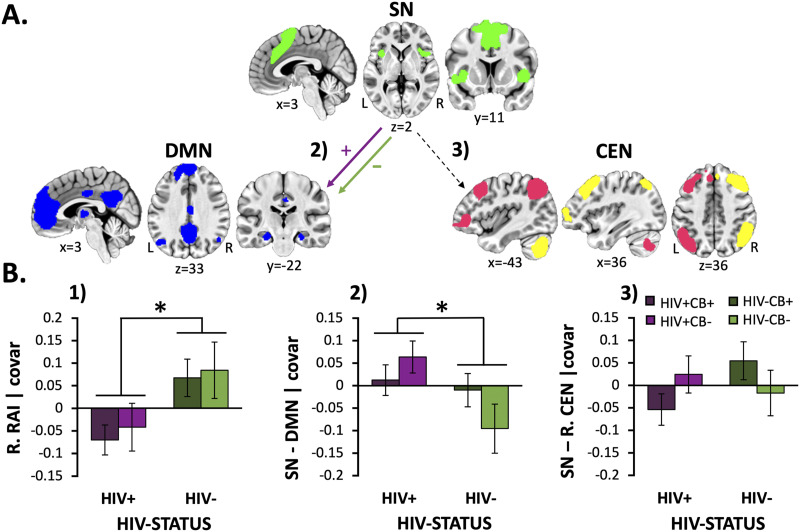Figure 1. .
HIV-associated effects on network-level resource allocation index and rsFC (SN-DMN and SN-CEN) metrics. (A) Schematic of network-level resting-state functional connectivity (rsFC) differences between HIV+ and HIV− participants. People living with HIV (PLWH) showed increased rsFC (purple [+] arrow) between the salience network (SN; green) and the default mode network (DMN; blue) relative to that from HIV− participants (green [−] arrow). The gray dashed arrow indicates nonsignificant group differences when considering rsFC between the SN and central executive network (CEN; pink = L.CEN, yellow = R.CEN). (B.1) PLWH (vs. HIV− participants) showed reduced resource allocation index (RAI) values when considering both the right (p = 0.008) and left hemisphere (data not displayed, F[1, 92] = 4.3, p = 0.042). (B.2) HIV-associated RAI reductions were driven by increased SN-DMN rsFC among PLWH (vs. HIV− participants; p = 0.027). (B.3) On the other hand, significant group differences were not detected when considering SN-R.CEN or SN-L.CEN (data not displayed) rsFC values (p > 0.3), which were the second aspect contributing to the composite RAI value. Unstandardized residuals are plotted after regressing effects of age, sex, mean FD, and NIC status. Error bars = standard error of the mean.

